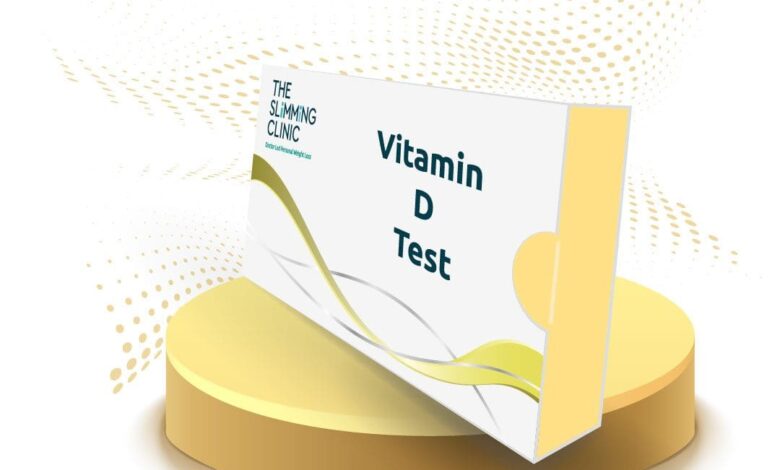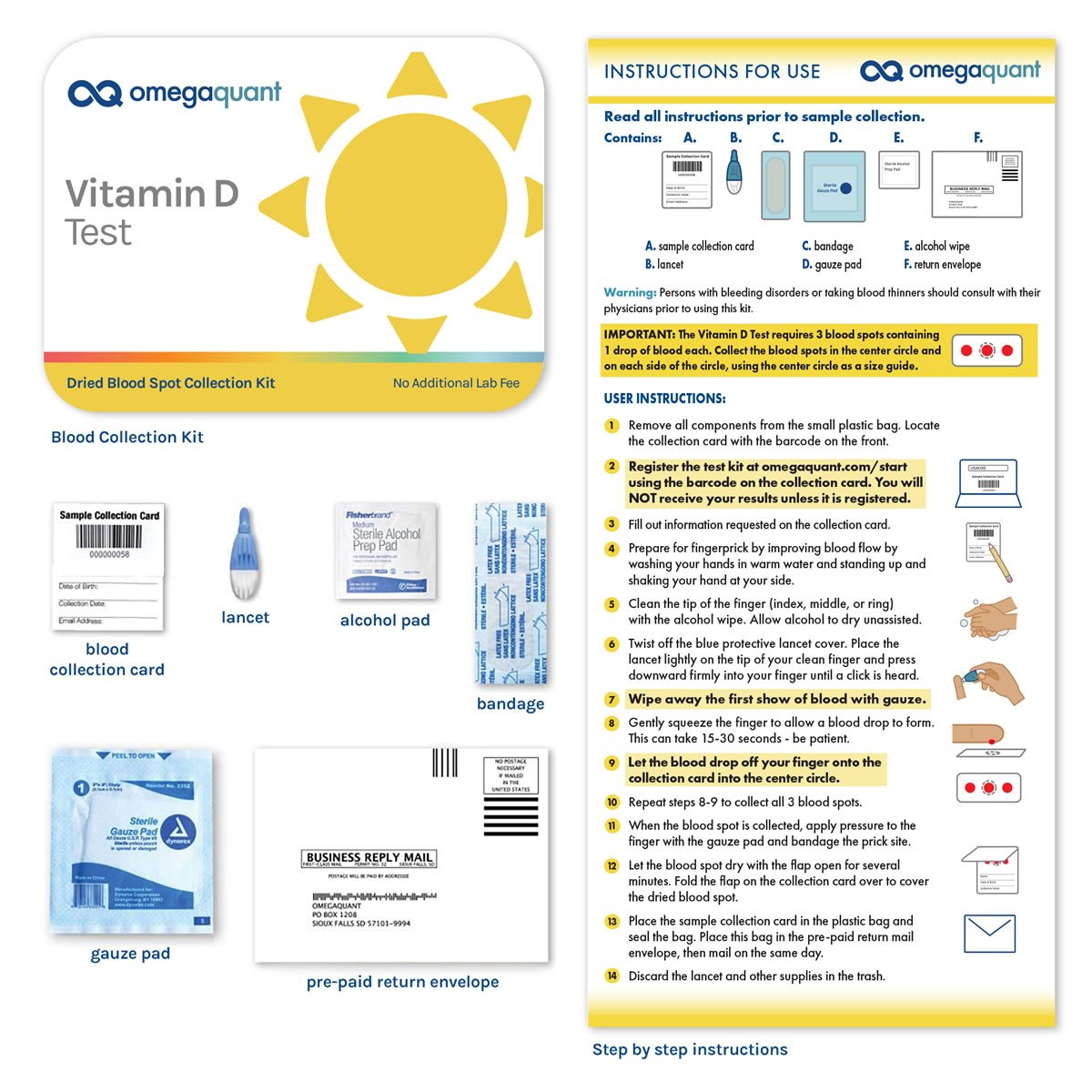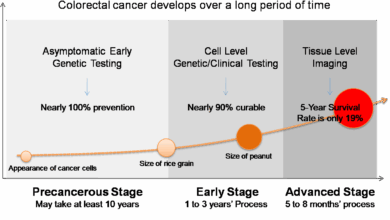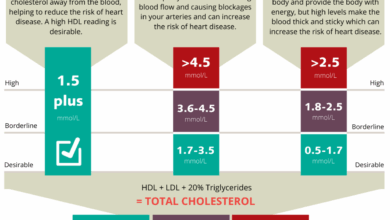
Should you get tested for vitamin D? This comprehensive guide explores the crucial role of vitamin D in your body, delving into potential deficiencies, risk factors, and the importance of testing. We’ll cover various aspects, from understanding the symptoms and causes to interpreting test results and creating a personalized plan for maintaining healthy vitamin D levels.
Vitamin D is essential for numerous bodily functions, including calcium absorption and immune system support. A deficiency can lead to a range of health issues, making testing a vital step in proactive health management. This guide will provide you with the knowledge to determine if testing is right for you.
Understanding Vitamin D Deficiency

Vitamin D, often called the “sunshine vitamin,” plays a crucial role in maintaining overall health. It’s essential for calcium absorption, bone health, immune function, and more. Understanding its importance and the potential for deficiency is vital for proactive well-being. This section will delve into the significance of vitamin D, the symptoms of deficiency, the different types, contributing factors, and dietary sources.Vitamin D’s role in the body extends far beyond bone health.
It regulates calcium and phosphorus absorption, supporting healthy bone growth and maintenance. Crucially, it also influences the immune system, helping the body fight off infections. Proper vitamin D levels are linked to improved muscle function and reduced risk of certain chronic diseases. Its influence on cell growth and differentiation further emphasizes its importance for overall well-being.
Vitamin D’s Role in the Body
Vitamin D, a fat-soluble vitamin, is crucial for numerous bodily functions. It aids in calcium absorption, a key component for strong bones and teeth. Vitamin D also supports immune function, influencing the body’s response to infections and inflammation. Beyond these, it plays a role in muscle function, cell growth, and potentially even reducing the risk of certain chronic diseases.
Symptoms of Vitamin D Deficiency
Symptoms of vitamin D deficiency can vary, ranging from mild to severe. Common symptoms include fatigue, muscle weakness, bone pain, and increased susceptibility to infections. More severe cases can lead to osteomalacia (softening of bones) in adults and rickets in children, characterized by skeletal deformities. In addition to these symptoms, some individuals might experience mood changes or impaired wound healing.
Thinking about getting a vitamin D test? Well, it’s a good idea to consider the overall health picture, including potential dangers like secondhand smoke in apartments and condominiums. Recent studies have shown that exposure to secondhand smoke can significantly impact health, especially respiratory health. For instance, if you live in a multi-unit building, learning about the dangers of secondhand smoke in apartments condominiums could be a crucial factor to consider when deciding if you should get tested for vitamin D.
Ultimately, a holistic approach to your health, factoring in environmental factors, is key to making informed decisions about health screenings.
Types of Vitamin D Deficiency
Vitamin D deficiency can manifest in various forms, impacting individuals differently. The primary distinction often lies in the severity and underlying causes. Mild deficiencies may present with subtle symptoms, while severe deficiencies can lead to significant health problems. The degree of deficiency can impact the severity and range of symptoms experienced by individuals.
Factors Contributing to Vitamin D Deficiency
Several factors can contribute to vitamin D deficiency. Limited sun exposure, particularly in individuals with darker skin tones or those living in areas with less sunlight, is a common contributor. Dietary deficiencies, especially in individuals with restrictive diets or those who don’t consume vitamin D-rich foods, can also play a role. Certain medical conditions, such as malabsorption syndromes, can also impair the body’s ability to absorb vitamin D.
Furthermore, age, obesity, and use of certain medications can impact vitamin D levels.
Food Sources of Vitamin D
A balanced diet plays a crucial role in maintaining adequate vitamin D levels. Certain foods naturally contain vitamin D, while others are fortified with it. The table below highlights some excellent dietary sources.
| Food Source | Vitamin D Content (mcg/serving) | Preparation Method | Notes |
|---|---|---|---|
| Fatty Fish (Salmon, Tuna, Mackerel) | 2-10 mcg | Baked, grilled, or pan-fried | Excellent sources of vitamin D and omega-3 fatty acids. |
| Egg Yolks | 0.6-1.5 mcg | Scrambled, fried, or poached | A good source, but generally lower in comparison to fatty fish. |
| Mushrooms (Certain varieties) | 0.5-1.0 mcg | Roasted, sautéed, or added to dishes | Mushrooms can be a valuable source, particularly when exposed to UV light. |
| Fortified Foods (Milk, Cereal, Yogurt) | 0.4-2 mcg | Consumed directly | Fortification significantly increases vitamin D content in these foods. |
Risk Factors and Predisposition
Understanding the factors that increase your risk of vitamin D deficiency is crucial for proactive health management. Knowing your predispositions allows you to take necessary steps to maintain optimal vitamin D levels, contributing to overall well-being. This section delves into the key risk factors, exploring how age, skin type, geography, and lifestyle choices all play a role in vitamin D status.Identifying populations at higher risk helps healthcare professionals and individuals take preventative measures.
By understanding the interconnectedness of these factors, we can gain a clearer picture of how to best support our bodies’ vitamin D needs.
Wondering if you should get your vitamin D levels checked? It’s a good question, especially considering how crucial it is for overall health. New parents, for example, often struggle with sleep deprivation for years after having a baby, as highlighted in this fascinating article about new parents don’t get sound sleep for 6 years. This sleep disruption can negatively impact vitamin D absorption and overall well-being, making it even more important to prioritize your health and consider a test.
So, should you get tested? Maybe. Talk to your doctor!
Populations at Higher Risk, Should you get tested for vitamin d
Certain groups are more susceptible to vitamin D deficiency due to factors like limited sun exposure, dietary restrictions, or underlying health conditions. Elderly individuals, people with darker skin tones, and those who live in regions with limited sunlight are at a heightened risk. Individuals with certain medical conditions, like kidney or liver disease, can also experience difficulties absorbing vitamin D.
Recognizing these risk factors is the first step in taking proactive measures to ensure adequate vitamin D levels.
Age and Vitamin D Levels
Vitamin D levels often decline with age. As we age, our bodies’ ability to synthesize vitamin D from sunlight may decrease, and absorption from dietary sources may also become less efficient. This decline is often linked to reduced exposure to sunlight, decreased mobility, and changes in digestive function. Consequently, elderly individuals may require supplementation to maintain optimal vitamin D levels.
For example, studies have shown that seniors often have lower vitamin D levels compared to younger adults.
Skin Type and Vitamin D Production
The amount of melanin in one’s skin directly impacts vitamin D production. Individuals with darker skin tones require significantly more sun exposure to produce the same amount of vitamin D as those with lighter skin tones. Melanin acts as a natural sunscreen, shielding the skin from UV rays that trigger vitamin D synthesis. This means individuals with darker skin tones may need to be more mindful of their sun exposure and potentially consider supplementation to maintain adequate vitamin D levels.
Geographic Location and Vitamin D Intake
Geographic location plays a significant role in vitamin D intake. Individuals living in areas with limited sunlight, such as those far from the equator or those experiencing long periods of winter, are more likely to experience vitamin D deficiency. This is due to the reduced opportunities for vitamin D synthesis through sun exposure. For example, populations living in northern latitudes during winter months may require supplementation to counteract the lack of sunlight.
Lifestyle Choices and Vitamin D Levels
Lifestyle choices significantly influence vitamin D levels. A balanced diet rich in vitamin D-containing foods, regular physical activity, and appropriate sun exposure all contribute to optimal vitamin D status. The following table illustrates the relationship between lifestyle choices and vitamin D levels:
| Lifestyle Choice | Positive Impact on Vitamin D Levels | Negative Impact on Vitamin D Levels | Examples |
|---|---|---|---|
| Diet | Consuming foods rich in vitamin D (e.g., fatty fish, egg yolks, fortified foods) | Following a diet low in vitamin D-rich foods | Regular consumption of salmon, tuna, or fortified milk versus a diet primarily consisting of processed foods. |
| Exercise | Moderate to intense outdoor activities | Sedentary lifestyle | Engaging in outdoor activities like jogging or hiking versus spending most of the day indoors. |
| Sun Exposure | Appropriate sun exposure (with appropriate precautions to prevent sunburn) | Limited or no sun exposure | Spending time outdoors during the day versus staying indoors throughout the day. |
| Supplementation | Taking vitamin D supplements as recommended by a healthcare professional | Inadequate or excessive supplementation | Consuming supplements according to a healthcare professional’s recommendations. |
Testing for Vitamin D

Knowing your vitamin D levels is crucial for maintaining optimal health. A simple blood test can reveal whether you have adequate vitamin D, are deficient, or have excessive levels. Understanding the different testing methods, procedures, and preparation steps can empower you to make informed decisions about your health.Different methods exist for assessing vitamin D levels, each with its own strengths and weaknesses.
Accurate testing is essential for establishing a precise diagnosis and guiding appropriate treatment strategies.
Methods of Vitamin D Testing
Various methods exist for determining vitamin D levels in the blood. The most common and widely accepted method is measuring the amount of 25-hydroxyvitamin D (25(OH)D). This form is considered the best indicator of vitamin D status as it reflects the body’s vitamin D stores. Other less frequently used tests may measure 1,25-dihydroxyvitamin D (1,25(OH)2D), which is the active form of vitamin D.
However, measuring 25(OH)D provides a more comprehensive assessment of vitamin D status.
Procedure for a Vitamin D Blood Test
A blood test for vitamin D is a straightforward procedure. A healthcare professional will collect a blood sample, typically from a vein in the arm. The process is generally painless and takes only a few minutes. The collected blood sample is then sent to a laboratory for analysis. The laboratory will measure the concentration of 25-hydroxyvitamin D in the blood serum.
Accuracy and Reliability of Testing Methods
The accuracy and reliability of vitamin D testing methods depend on several factors, including the laboratory’s quality control measures and the patient’s health status. Generally, blood tests for 25(OH)D are highly accurate and reliable when performed in certified laboratories. The results obtained should be interpreted in the context of the patient’s overall health and medical history.
Preparation for a Vitamin D Test
Specific preparation for a vitamin D test is minimal. Patients are typically advised to avoid strenuous exercise or consuming a large meal immediately before the test. However, these instructions are not typically stringent, and no special dietary restrictions are generally necessary.
Typical Vitamin D Levels and Health Implications
| Vitamin D Level (ng/mL) | Health Implications |
|---|---|
| Less than 20 | Vitamin D deficiency, increasing risk of various health problems |
| 20-30 | Marginal vitamin D deficiency; may require supplementation |
| 30-100 | Adequate vitamin D levels; generally considered healthy range |
| Above 100 | Possible vitamin D toxicity; requires medical evaluation |
Note: These ranges are approximate guidelines and may vary based on individual factors and medical conditions. Always consult a healthcare professional for interpretation of your specific results.
Interpreting Results and Next Steps
Understanding your Vitamin D levels is crucial for maintaining overall health. A simple blood test can reveal whether you have adequate Vitamin D, a deficiency, or an excess. Interpreting these results and taking the appropriate steps are vital for optimal well-being. This section will guide you through interpreting your Vitamin D test results, outlining next steps, and providing strategies for increasing your Vitamin D levels.Interpreting your Vitamin D test results involves comparing your blood level to established ranges.
These ranges are often categorized as deficient, insufficient, sufficient, and potentially excessive. Your doctor will explain the specific values and what they mean in relation to your individual health.
Interpreting Vitamin D Levels
Vitamin D levels are typically measured in nanograms per milliliter (ng/mL). A healthcare professional can interpret the specific results and determine if your level falls within the optimal range. The ranges are often categorized as follows:
- Deficient: Levels below 20 ng/mL typically indicate a deficiency. This may lead to various health concerns.
- Insufficient: Levels between 20 and 30 ng/mL suggest an insufficient level, potentially requiring supplementation to reach optimal levels.
- Sufficient: Levels between 30 and 100 ng/mL usually indicate sufficient Vitamin D, but the optimal range may vary based on individual needs.
- Potentially Excessive: Levels above 100 ng/mL may be considered excessive and could lead to health complications. This requires careful monitoring and evaluation by a healthcare professional.
Addressing Vitamin D Deficiency
If your Vitamin D level is found to be deficient or insufficient, several steps can be taken to address the issue. These steps should always be discussed and agreed upon with your healthcare provider.
- Dietary Changes: A balanced diet rich in Vitamin D-rich foods, along with supplementation, can help increase Vitamin D intake.
Recommended Dietary Changes
Dietary modifications play a significant role in increasing Vitamin D intake. A balanced diet, including fortified foods and Vitamin D-rich sources, can significantly contribute to adequate levels.
Wondering if you should get your vitamin D levels checked? It’s a question many women ask, especially when facing fertility challenges. Recent research suggests a link between vitamin D deficiency and various pregnancy complications, including recurrent miscarriages. For a deeper dive into how certain tests can help pinpoint the root cause of miscarriages, check out this informative article on test the cause of many miscarriages.
Ultimately, discussing your concerns with a doctor is key to determining if a vitamin D test is right for you and your unique situation.
- Fortified Foods: Many foods, such as milk, yogurt, and cereals, are fortified with Vitamin D. Regular consumption of these fortified foods can contribute to your daily Vitamin D intake.
- Fatty Fish: Salmon, tuna, mackerel, and sardines are excellent sources of Vitamin D. Including these fish in your diet at least twice a week can provide a substantial amount of Vitamin D.
- Egg Yolks: Egg yolks contain moderate amounts of Vitamin D. Incorporating eggs into your meals can be a convenient way to increase your Vitamin D intake.
- Mushrooms: Certain types of mushrooms, particularly those exposed to UV light, can produce Vitamin D. Adding mushrooms to your meals can be a nutritious way to supplement your Vitamin D intake.
Treatment Options
Vitamin D supplementation is a common treatment option for deficiency. However, the specific dosage and type of supplement should be determined by a healthcare professional.
- Vitamin D Supplements: Vitamin D supplements come in various forms, such as pills, liquids, and gummies. The recommended dosage will vary depending on the individual’s needs and the severity of the deficiency. Always consult your healthcare provider before starting any supplementation.
Improving Sun Exposure
Sunlight is a crucial source of Vitamin D. However, it’s essential to practice safe sun exposure.
- Strategic Sun Exposure: Expose your skin to sunlight for a short period, typically 10-15 minutes, several times a week. Aim for midday sun exposure, when the sun’s rays are strongest. It’s essential to remember that excessive sun exposure can be harmful. Sunscreen should always be used to protect your skin from the sun’s harmful UV rays.
Treatment Options and Potential Side Effects
| Treatment Option | Description | Potential Side Effects | Important Considerations |
|---|---|---|---|
| Vitamin D Supplements | Oral supplements providing Vitamin D | Nausea, vomiting, diarrhea, headache, fatigue, loss of appetite, and stomach upset. In rare cases, kidney stones or high calcium levels in the blood (hypercalcemia) may occur. | Consult a doctor for dosage and appropriate duration. |
| Diet Modifications | Dietary changes to include Vitamin D-rich foods. | Generally, well-tolerated, but potential for allergic reactions to specific foods. | Consult a registered dietitian or nutritionist for personalized dietary plans. |
Maintaining Healthy Vitamin D Levels: Should You Get Tested For Vitamin D
Now that we’ve explored the importance of vitamin D, understanding deficiency, and the process of testing, let’s delve into proactive strategies for maintaining optimal levels. A proactive approach to vitamin D is crucial for overall health and well-being, preventing future issues and ensuring optimal bodily functions.
Evidence-Based Strategies for Preventing Deficiency
Several evidence-based strategies can help prevent vitamin D deficiency. These strategies encompass dietary choices, sun exposure, and supplementation, all working in tandem to maintain sufficient vitamin D levels.
Importance of a Balanced Diet Rich in Vitamin D
A balanced diet rich in vitamin D is essential for maintaining healthy levels. Vitamin D is not abundant in many foods, but certain dietary choices can contribute significantly to meeting daily requirements.
- Fatty fish (salmon, tuna, mackerel) are excellent sources of vitamin D, offering a significant portion of the recommended daily intake in a single serving.
- Egg yolks, fortified dairy products (milk, yogurt, cheese), and certain mushrooms (like shiitake and morels) also contain vitamin D, although in smaller quantities compared to fatty fish.
- Many breakfast cereals and other food products are fortified with vitamin D, providing a convenient way to incorporate this essential nutrient into the diet.
Role of Sunlight Exposure in Vitamin D Production
Sunlight plays a vital role in vitamin D production within the body. The body’s ability to synthesize vitamin D from sunlight exposure is influenced by various factors, including skin pigmentation, time of day, and geographic location.
- Exposure to sunlight, particularly UVB rays, triggers the body’s natural vitamin D production process. This process is crucial, as it allows the body to synthesize vitamin D independently of dietary intake.
- The optimal time for sunlight exposure to stimulate vitamin D production typically falls between 10 a.m. and 3 p.m. This time frame ensures sufficient UVB radiation exposure while minimizing the risk of sunburn.
- Individuals with darker skin tones generally require more sunlight exposure to produce the same amount of vitamin D compared to those with lighter skin tones. This difference is due to the melanin content in the skin, which acts as a natural sunscreen and can block UVB radiation.
Vitamin D Supplements: Dosage and Potential Interactions
Vitamin D supplements can be beneficial for individuals who cannot obtain sufficient amounts from diet and sunlight. However, it is essential to consult with a healthcare professional before starting any supplementation regimen.
- Vitamin D supplements come in various forms, including vitamin D2 (ergocalciferol) and vitamin D3 (cholecalciferol). While both forms are effective, vitamin D3 is often preferred due to its greater similarity to the form of vitamin D produced by the body.
- Dosage recommendations vary depending on individual needs and health conditions. Consult a doctor to determine the appropriate dosage for your specific circumstances.
- Vitamin D supplements can interact with certain medications, such as blood thinners and some medications for high blood pressure. Always inform your doctor about any medications you are taking before starting vitamin D supplementation.
Incorporating Vitamin D-Rich Foods into a Balanced Diet
Integrating vitamin D-rich foods into a balanced diet is crucial for maintaining optimal health. A varied diet that includes a range of nutritious foods is essential for meeting the body’s overall nutritional needs.
- Incorporate fatty fish like salmon and tuna into your meals at least twice a week.
- Fortified dairy products, such as milk and yogurt, can be incorporated into your breakfast or snack routines.
- Include vitamin D-fortified foods in your daily meals, such as breakfast cereals and orange juice, to boost your vitamin D intake.
Vitamin D Supplement Comparison
This table provides a comparison of different vitamin D supplement brands, their ingredients, and their prices. Always consult with a healthcare professional before choosing a specific supplement brand.
| Brand | Ingredients | Dosage (per capsule/tablet) | Approximate Price (USD) |
|---|---|---|---|
| Brand A | Vitamin D3 (cholecalciferol) | 50 mcg | $10 |
| Brand B | Vitamin D3 (cholecalciferol), Vitamin K2 | 25 mcg | $15 |
| Brand C | Vitamin D3 (cholecalciferol), Magnesium | 100 mcg | $12 |
Importance of Professional Guidance
Understanding vitamin D levels is crucial for overall health, but acting on that understanding requires careful consideration. Self-treating a potential deficiency can be risky and lead to complications, while a personalized approach, guided by a healthcare professional, can optimize vitamin D levels safely and effectively.Seeking professional guidance ensures that any interventions are tailored to your specific needs and health history, minimizing potential harm and maximizing benefits.
A healthcare professional can assess your individual risk factors, provide accurate testing, and create a treatment plan designed to improve your vitamin D status without compromising your well-being.
The Significance of Professional Consultation
A healthcare professional possesses the expertise to interpret your vitamin D levels within the context of your complete health picture. They can consider factors like age, diet, medications, and underlying health conditions that might influence vitamin D absorption or metabolism. This holistic approach is essential for crafting a safe and effective treatment plan.
Importance of Discussing Personal Health History
Your personal health history significantly impacts how your body processes vitamin D. Conditions such as Crohn’s disease, celiac disease, or liver or kidney problems can affect vitamin D absorption and metabolism. Furthermore, certain medications, including some anti-seizure medications and corticosteroids, can interfere with vitamin D levels. A comprehensive health history allows your healthcare provider to tailor the testing and treatment strategies to your specific situation.
Potential Dangers of Self-Treating Vitamin D Deficiency
Self-treating vitamin D deficiency can lead to several potential complications. Taking excessive amounts of vitamin D supplements can result in hypervitaminosis D, characterized by elevated blood levels of vitamin D. This can cause a range of symptoms, including nausea, vomiting, weakness, and kidney problems. Furthermore, self-treatment might not address the underlying cause of the deficiency, potentially leading to ineffective treatment or exacerbating existing health issues.
Questions to Ask a Healthcare Professional
Asking the right questions is essential for a productive consultation. A thorough discussion with your healthcare provider should include inquiries about the specific vitamin D test to be performed, the normal ranges for your age and gender, and the implications of your results. It’s also vital to discuss potential side effects of supplements, the expected duration of treatment, and whether any lifestyle changes are necessary to maintain optimal vitamin D levels.
Additionally, consider asking about the potential interactions between vitamin D and other medications you may be taking.
- What specific vitamin D test is recommended for me?
- What are the normal ranges for vitamin D in my age group and gender?
- What are the potential side effects of vitamin D supplements?
- How long is the expected duration of treatment?
- Are there any lifestyle changes that might improve my vitamin D levels?
- How do I interpret the results of my vitamin D test?
- What are the potential interactions between vitamin D and my current medications?
Creating a Personalized Vitamin D Plan
Collaborating with your healthcare provider allows for the development of a personalized vitamin D plan. This involves a thorough discussion of your health history, lifestyle, and dietary habits. Based on this information, your healthcare provider can recommend appropriate vitamin D testing, optimal supplementation strategies, and necessary lifestyle adjustments to maintain healthy vitamin D levels. This tailored approach ensures that treatment is safe, effective, and aligns with your overall health goals.
- A personalized vitamin D plan involves a detailed discussion of your health history and lifestyle.
- The plan should incorporate appropriate vitamin D testing, supplementation, and lifestyle adjustments.
- The plan should be tailored to your specific needs and health goals.
- Regular monitoring of vitamin D levels and adjustments to the plan as needed is crucial.
Final Summary
Ultimately, the decision to get tested for vitamin D depends on individual circumstances and potential risk factors. This guide has armed you with the information needed to understand the importance of this crucial vitamin, evaluate your personal situation, and discuss your options with a healthcare professional. Remember, a personalized approach, incorporating professional guidance, is key to making informed decisions about your health.





